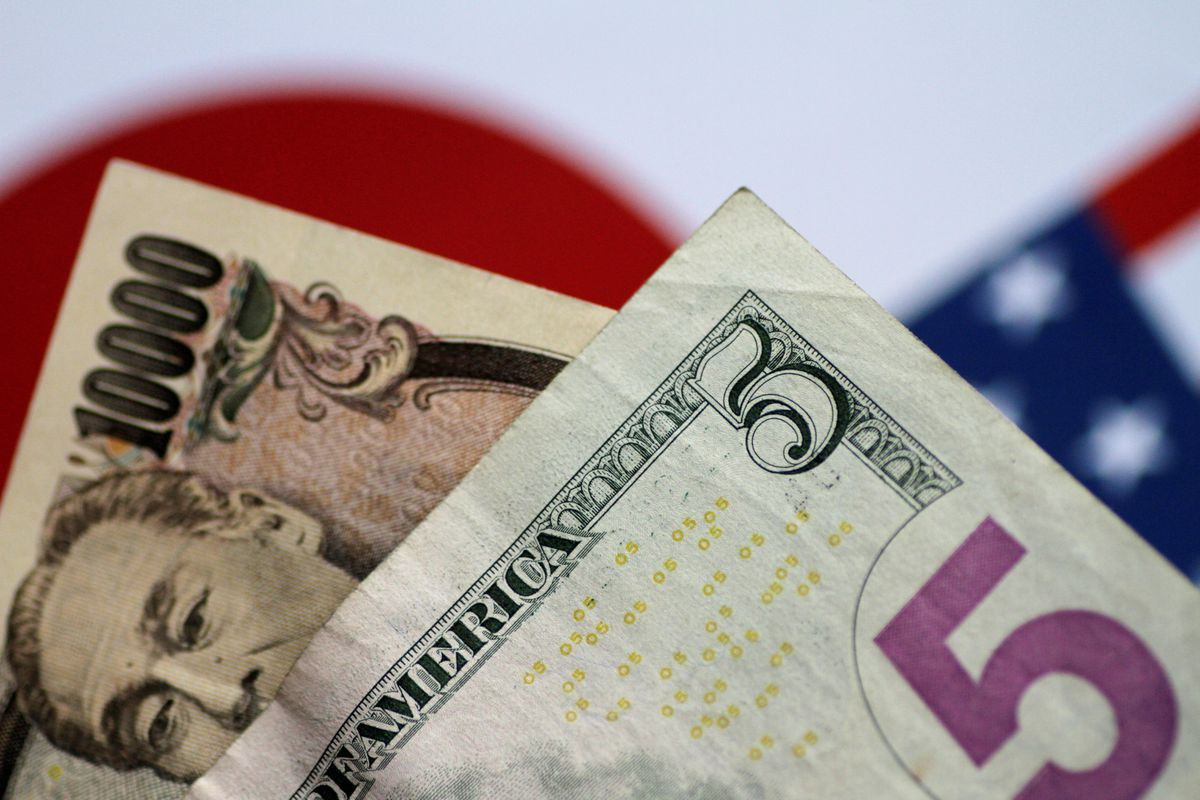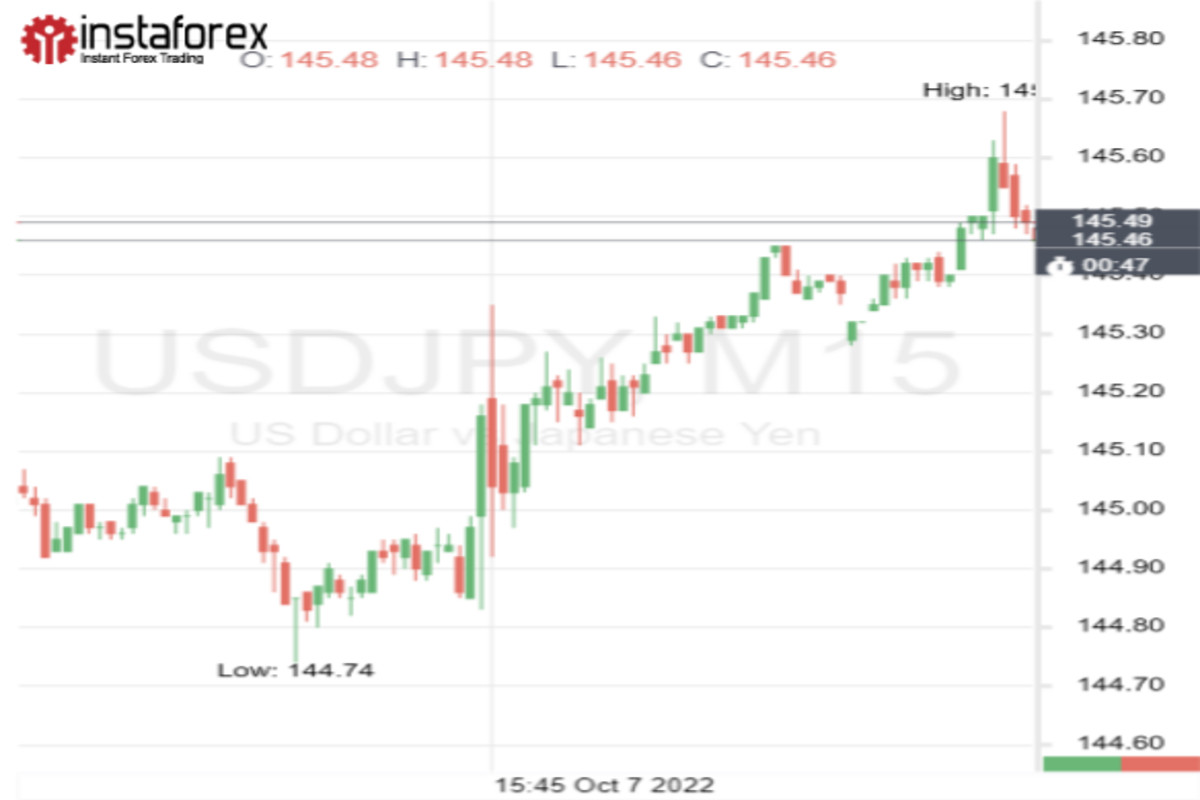
The yen continues to depreciate against the dollar. Moreover, its decline is becoming more and more rapid. This increases the likelihood that the JPY may set a new anti-record in the near future.
This year, the yen shows the worst dynamics among all the currencies of the Group of 10. The strong divergence in the monetary policy of the Bank of Japan and the Federal Reserve is to blame for everything.
While the BOJ remains dovish and keeps interest rates negative, its US counterpart is hawkish and aggressively raising rates.
To curb record inflation, US officials have raised their base rate target range by as much as 3 percentage points since March.
This led to the fact that the JPY fell against the dollar this year by more than 20%. However, according to many analysts, the yen is still far from the bottom.
In the coming days, the Japanese currency is at risk of falling to a new 24-year low, even as fears of re-intervention intensify.
Recall that in September, when the JPY fell below 145, Japan for the first time since 1998 conducted a unilateral intervention in the market, spending almost $20 billion on the purchase of the yen from its reserves.
The effect of the intervention was short-lived. Dollar bulls quickly regained lost ground and last week were able to once again gain a foothold above the key 145 mark.
Last Friday, the greenback received a new powerful impetus. The jump in the DXY index was supported by a strong US employment report for September.
According to statistics, the number of people employed in the non-agricultural sector of the country rose to 265,000 against the forecast of 250,000. And the unemployment rate unexpectedly fell from 3.7% to 3.5%, although it was expected that the rate would not change.
As we can see, despite the previous rounds of rate hikes, the US labor market remains stable. This inspires optimism about the continuation of the Fed's aggressive policy.
Now traders expect that in November the US central bank will again increase the indicator by 75 bps. Confidence in the determination of the Fed is reinforced by recent hawkish comments from US politicians.
Last week, several Fed officials at once spoke in favor of further tightening, which also helped the dollar to strengthen on all fronts, including against the yen.
The USD/JPY pair has already risen following the results of three consecutive sessions and maintains an upward trend at the start of Monday. At the time of writing, the asset was trading at 145.50.

In addition to expectations of further growth in the monetary divergence of the United States and Japan, the rise of the major is also facilitated by increased concerns about the global recession.
According to Bloomberg economists, the global average interest rate has already reached 4.7%, and over the next two months this figure will rise to 5.2%.
In the foreseeable future, the Fed, the European Central Bank and most of their colleagues intend to continue to aggressively raise the cost of borrowing.
The faster the pace of global tightening, the higher the risk of a slowdown in global economic growth. This is favorable ground for the dollar, which is traditionally considered the best safe haven currency.
What to pay attention to this week
Today's holidays in the USA and Japan may give a limited boost to bulls of the USD/JPY pair. Nevertheless, upward movements are likely to prevail amid anti-risk sentiment in the market.
The data that will be released on Wednesday and Thursday will be crucial for determining the short-term directions of the dollar-yen asset.
In the middle of the working week, the minutes of the September meeting of the Federal Open Market Committee (FOMC) will be published. Traders hope that it will shed light on the future plans of the US central bank regarding interest rates.
If it turns out that last month the majority of Fed members supported the continuation of an aggressive anti-inflationary campaign, this could significantly increase the likelihood of a fourth rate hike by 75 bps in November.
In this case, the dollar will get another dope, and the yen will weaken even more and, most likely, will test a new low.
Thursday could also be a black day for the Japanese currency. Traders are waiting for key US inflation data for September.
Economists predict a decline in the consumer price index from 8.3% to 8.1%. However, if inflation turns out to be more stable, it will strengthen expectations of continued aggressive rate hikes by the Fed.
In this scenario, the dollar will win again, and the yen will continue its longest losing streak since May. Following the results of the last seven-day period, the JPY showed its eighth consecutive weekly drop.
Technical picture for USD/JPY
The overbought conditions of the RSI are challenging for bulls on the dollar-yen pair, but a steady breakout of resistance from 12 days ago signals further growth.
Also, the USD/JPY bears are challenged by the stable trading of the pair outside the 100-SMA, close to 144.15 at the time of publication, and the ascending support line since the beginning of August is about 143.75.
The key obstacle for bulls on the dollar-yen pair is the level of 145.90-145.95. After overcoming it, the ascending resistance line from September 7, located at the level of 146.90, will be in the center of attention.





















